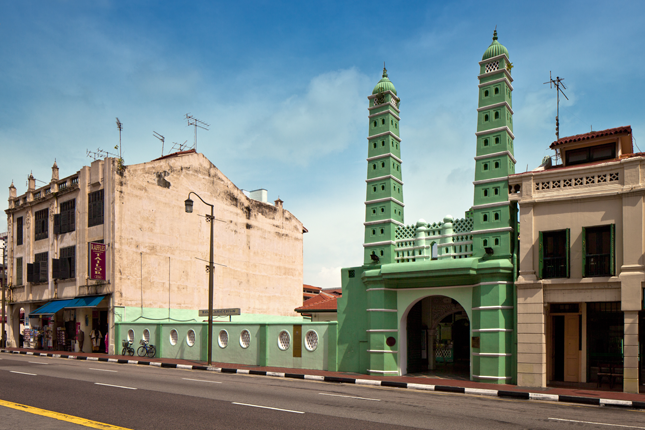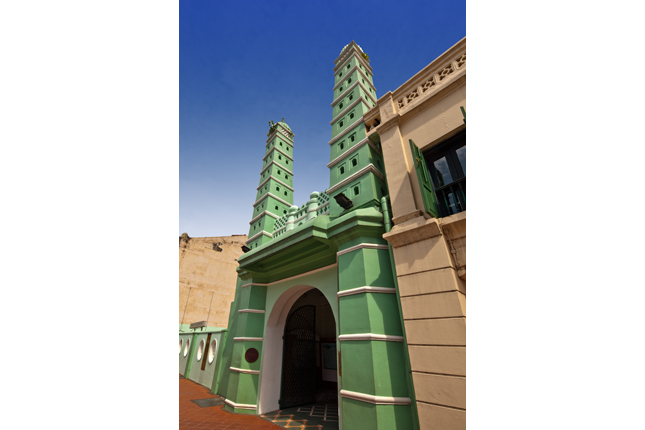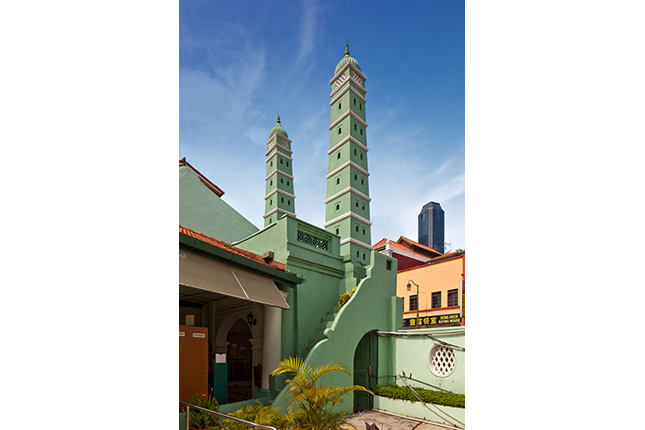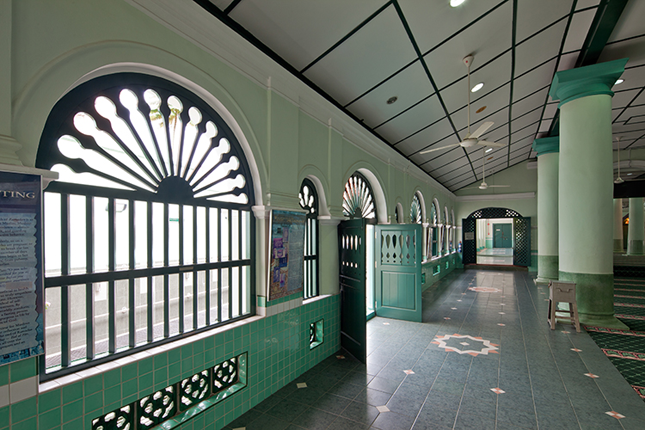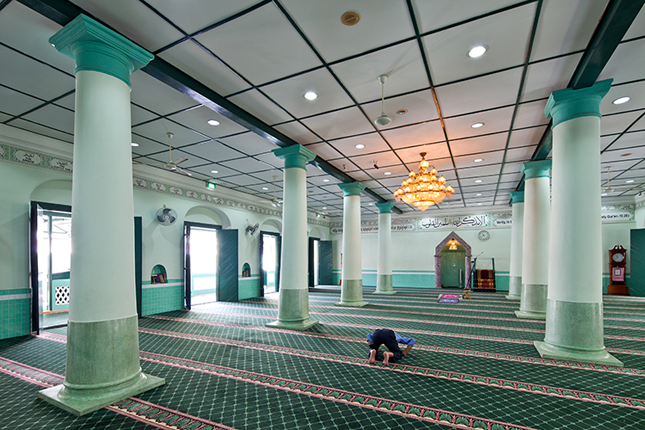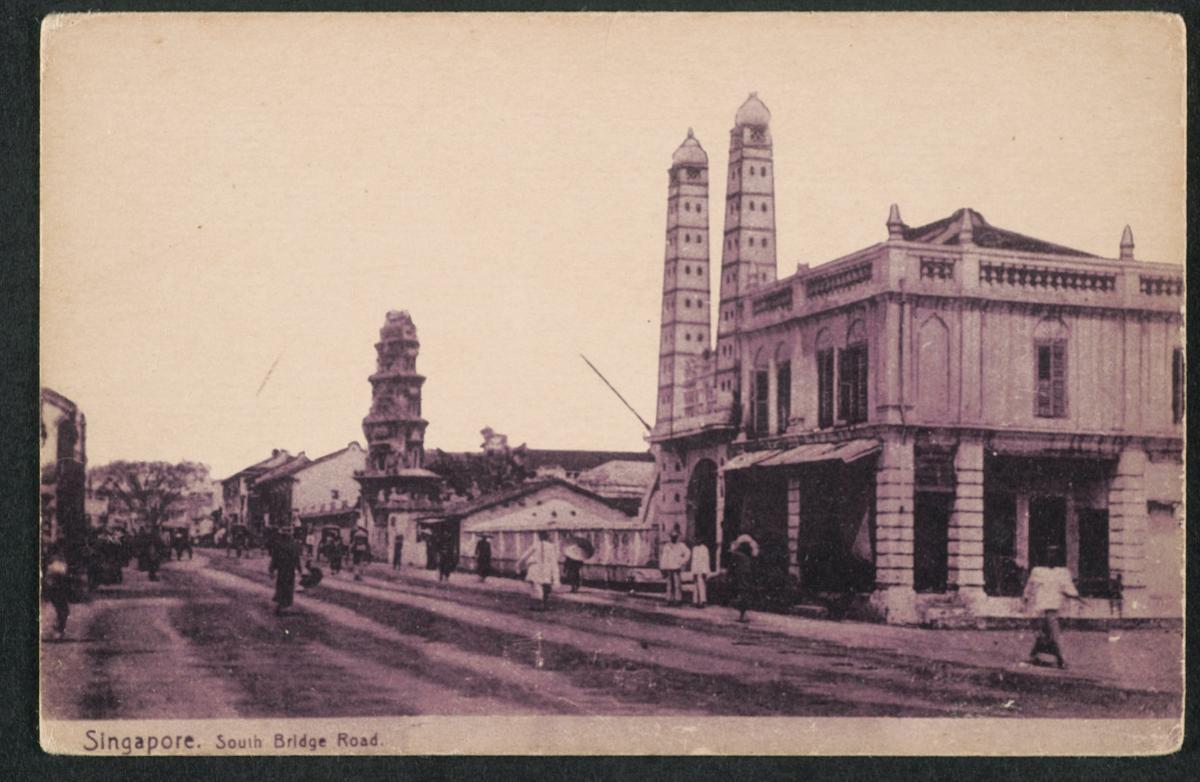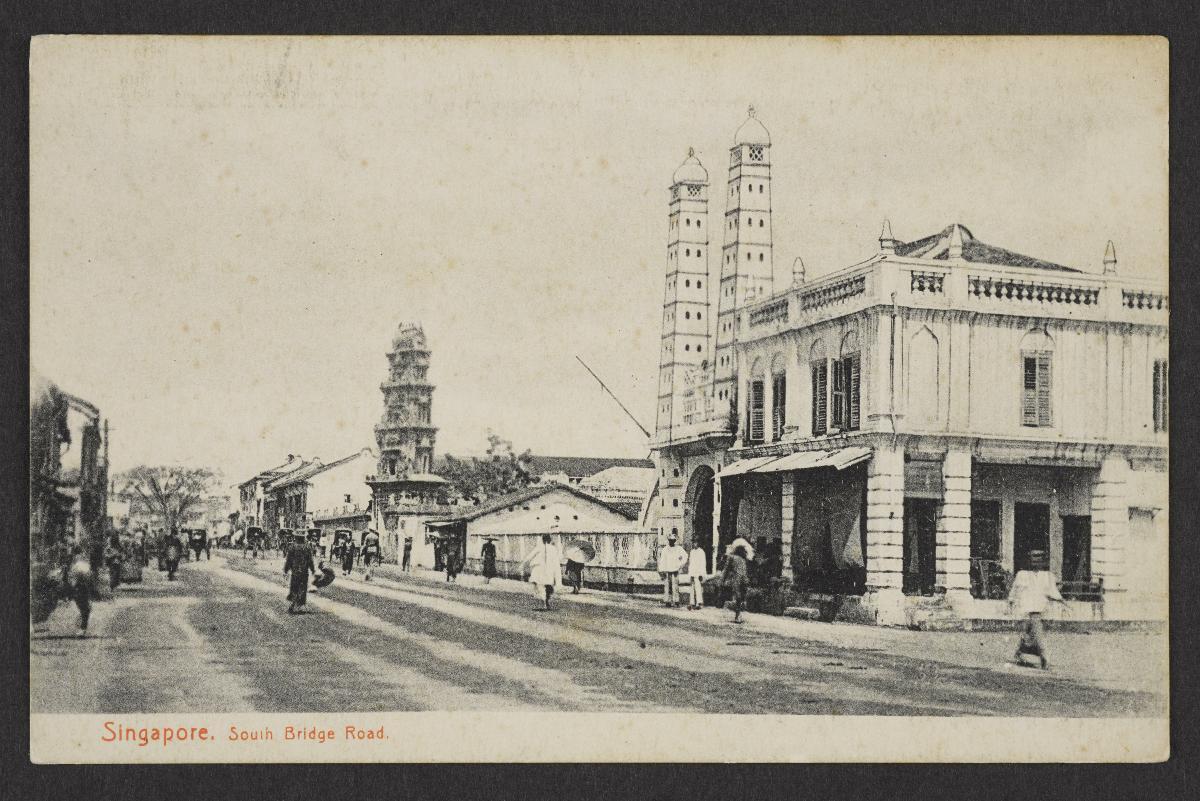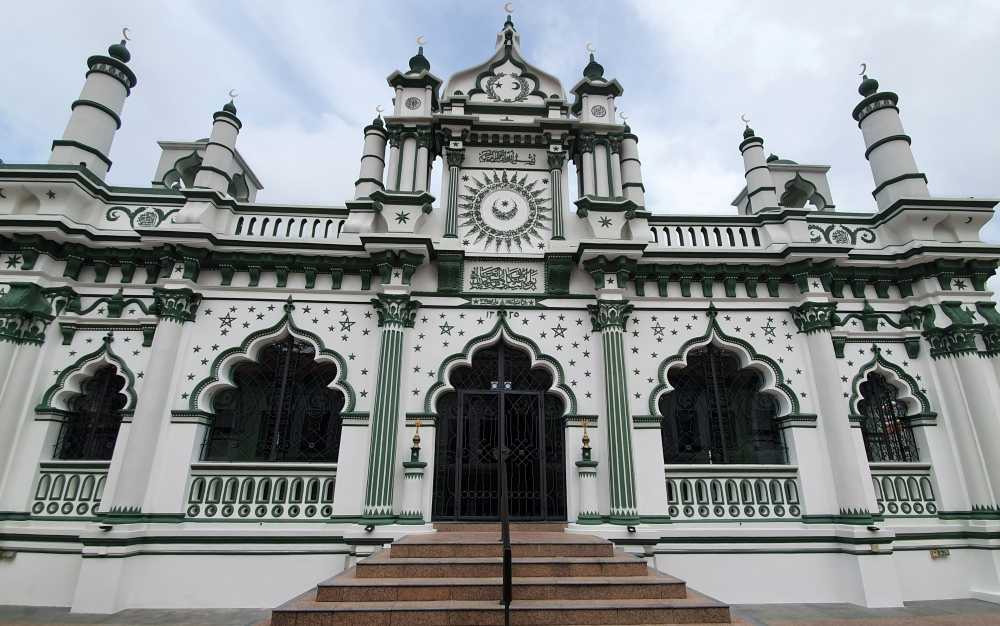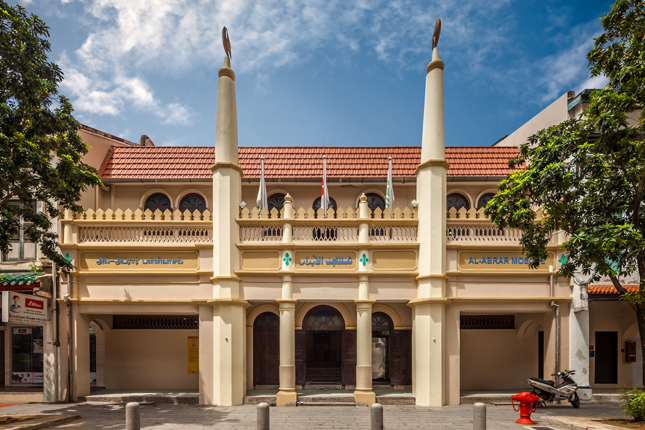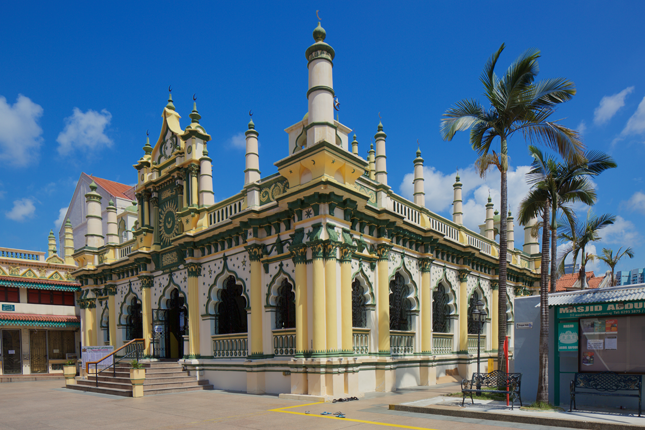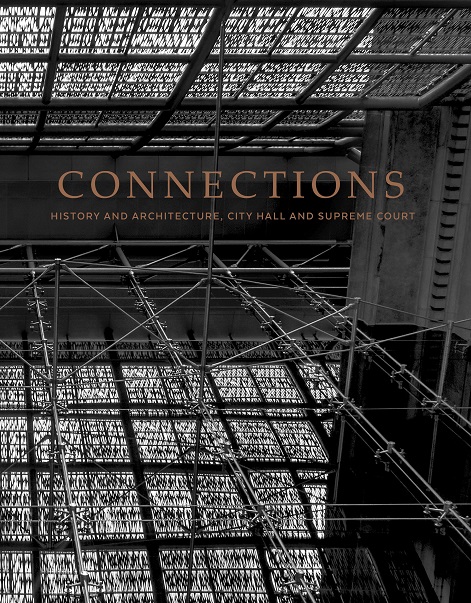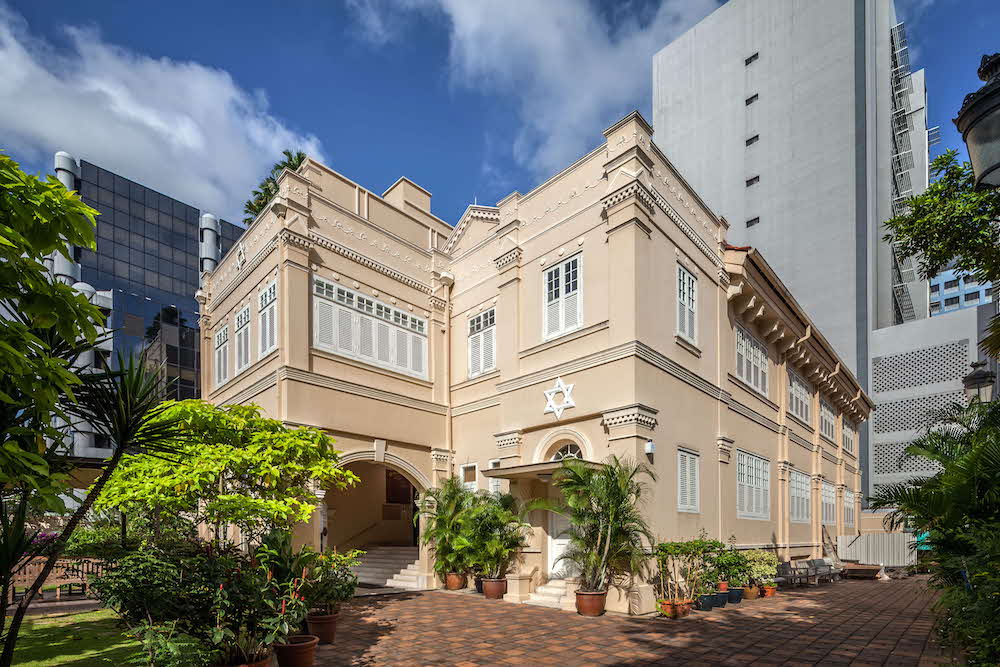Like the nearby Sri Mariamman Temple, Jamae Mosque has been a familiar landmark on South Bridge Road since the mid-nineteenth century. It is one of the oldest mosques in Singapore and serves as a reminder of the considerably large population of Chulia immigrants who had settled in the Chinatown district and their crucial role in the development of colonial Singapore’s fledgling economy.
Mosque for the Chulia Community
The Chulias hailed from South India's Coromandel Coast and were mostly traders and moneychangers. Many of them lived in Chinatown alongside Chinese and other Indians. Under the leadership of a Chulia pioneer named Anser Sahib, the Chulia Muslim community erected a mosque on the present site of Jamae Mosque circa 1826. The current mosque was built some years later, between 1830 and 1835.
Similar to Al-Abrar Mosque, Jamae Mosque is also known as Chulia Mosque. It is sometimes referred to as Periya Palli (‘Big Mosque’ in Tamil). Mosque Street, which runs alongside the mosque, was named after it.
A 999-year lease was granted to the mosque in 1881. In 1894, the court appointed a panel of five trustees to oversee the management of Jamae Mosque and Nagore Dargah on the neighbouring street. When a new committee was chosen in 1910, the trusteeship was extended to Al-Abrar Mosque. All three religious sites under the Chulia wakaf (endowment) were later placed under the care of the Mahomedan and Hindu Endowment Board in 1917.
Architecture and Furnishings
Jamae Mosque's design is largely inspired by the Indo-Islamic style, but also incorporates Neoclassical elements. One of its most prominent features is the pair of octagonal minarets flanking the main entrance, which have become an icon of South Bridge Road since the mosque was built. The seven levels of double arch-shaped niches give the minarets their signature appearance. A symmetrical miniature palace façade, adorned with small doors and windows, joins the two minarets above the gateway. Above the main gate is a little balcony on which the adhan (call to prayer) was made.
European features such as Tuscan columns and pilasters are employed in the mosque's architecture. The monument is well adapted to Singapore's tropical climate: verandahs surrounding the prayer hall and numerous windows with semi-circular fanlights ensure that the interior is well ventilated and cool. Chinese green-glazed and pierced porcelain tiles are set beneath the windows.
While the mosque's compound adheres to the urban grid set forth by the colonial authorities, the main prayer hall is aligned to the qibla (orientation to Mecca). In the inner prayer hall, an ogee-shaped (onion-shaped) niche called the mihrab indicates the direction towards the Islamic holy city. A simple minbar (pulpit) stands next to it.
Jamae Mosque Today
Today, Jamae Mosque remains a popular place of worship among Chulia Muslims, as well as devotees from other ethnic communities. Muslims working in the area also frequent the mosque, particularly on Fridays. The mosque has an approximate capacity of 1,500 worshippers and is one of the few mosques in Singapore that conducts religious classes in Tamil. It is currently under the purview of the Islamic Religious Council of Singapore (Majlis Ugama Islam Singapura, MUIS).
Our National Monuments
Our National Monuments are an integral part of Singapore’s built heritage, which the National Heritage Board (NHB) preserves and promotes for posterity. They are monuments and sites that are accorded the highest level of protection in Singapore.




